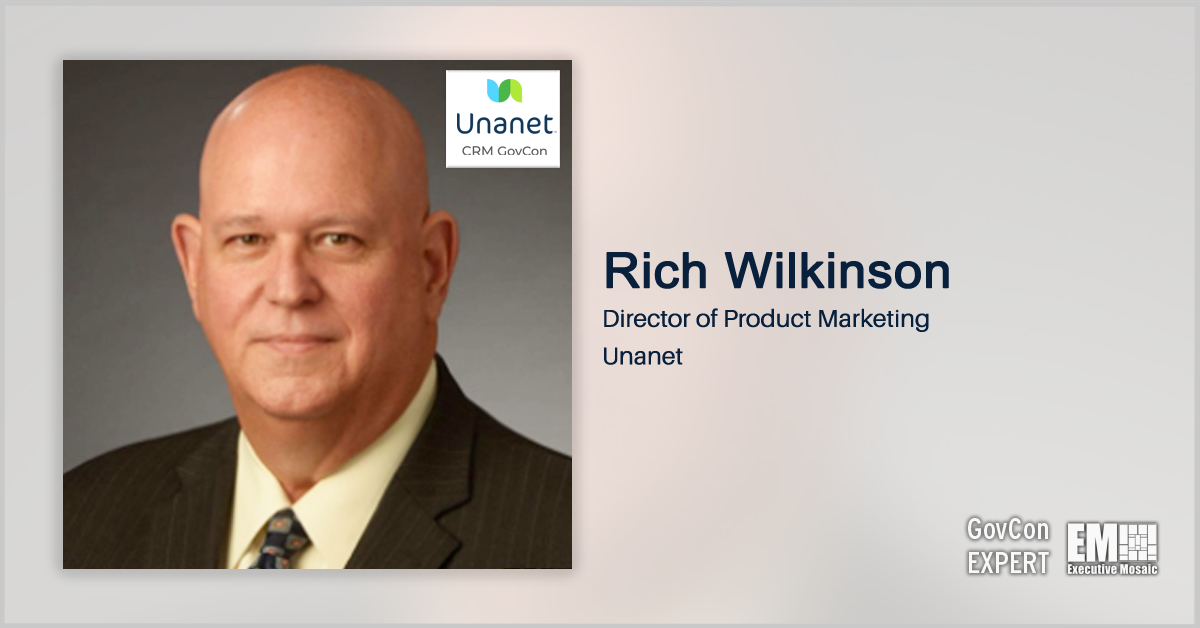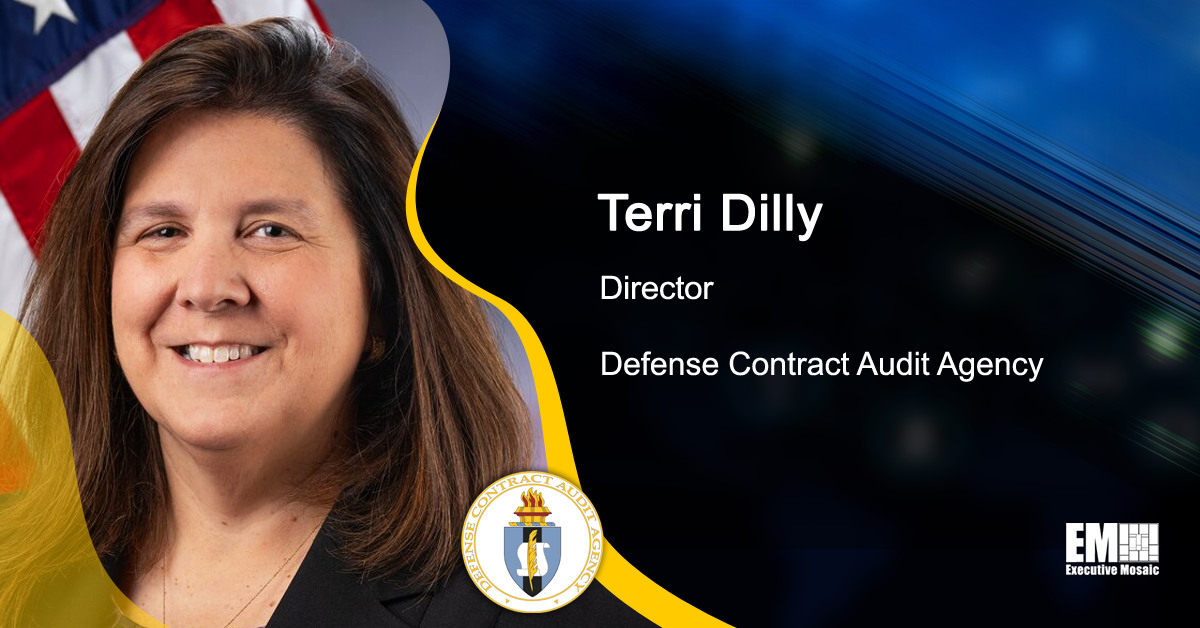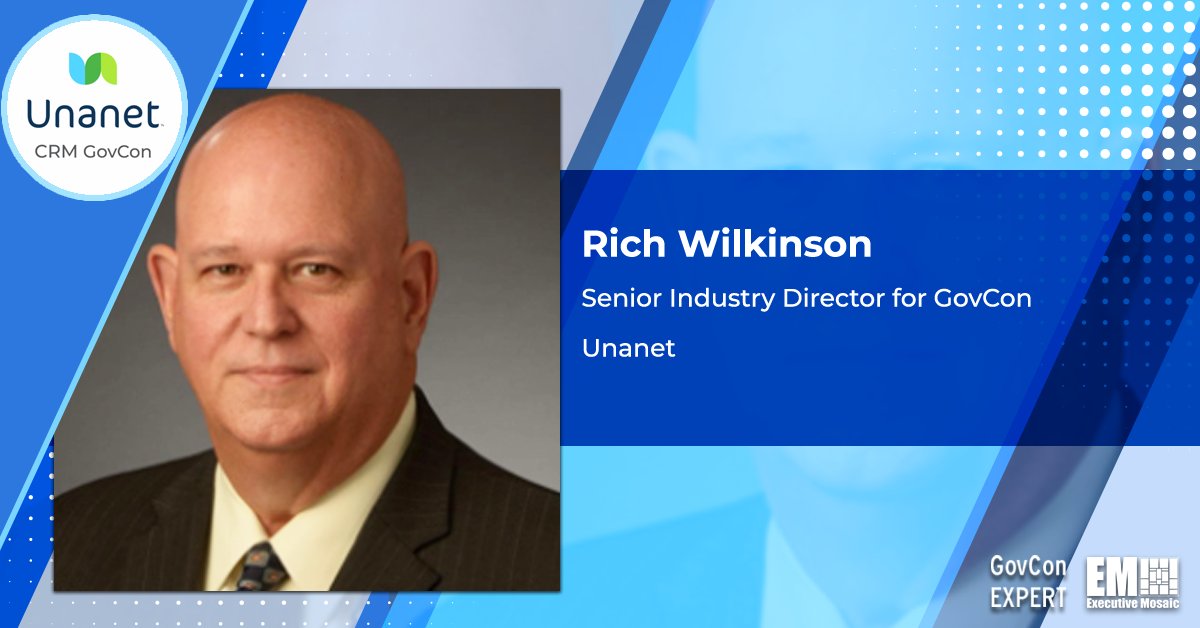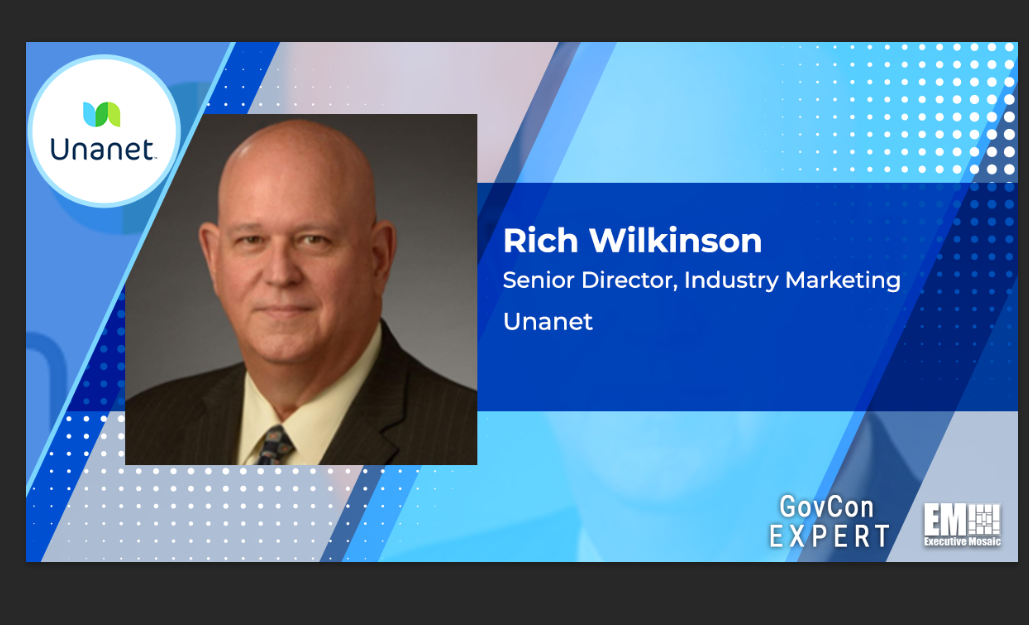Rich Wilkinson, director of product marketing for Unanet and a GovCon Expert, has published the second part of his latest feature with Executive Mosaic to shed a light on six sources of pressure that GovCon Expert Rich Wilkinson expects will shape the GovCon business and impact company strategy in the year ahead — and likely beyond.
Previously, the first three of the six pressure sources were highlighted in the first feature on Jan. 7th from GovCon Expert Rich Wilkinson, including market intelligence tools, operational concerns and more.
Here in Part 2 of his 2022 trend-spotting article for GovCon Wire, government contracting industry veteran Rich Wilkinson reveals three more sources of pressure that he expects will shape the GovCon business and individual company strategy in the next 12 months and beyond
“Government contracting firms on the whole are carrying an optimistic outlook into 2022, with more than 70 percent of GovCon execs who were surveyed for the 2021 GAUGE Report characterizing their view of the current business environment as either “cautiously optimistic” or “very optimistic. But that generally rosy outlook is tempered to some extent by a distinct set of industry pressures, some familiar and some generating a new sense of urgency.”
You can read Rich Wilkinson’s latest GovCon Expert article below:
Pressure Cooker, Part 2: Three More Issues Facing GovCons in 2022
…Plus predictions for how each issue could play out
By Rich Wilkinson
For the government contracting industry, 2022 is shaping up as a year for optimism — more than 70% of GovCon execs surveyed for the 2021 GAUGE Report have a positive outlook on the current business environment — but also one that will present its fair share of business challenges.
Along with the three challenges/pressure sources I detailed in Part 1 of this article, here are three more that promise to keep government contracting firms on their toes in the year ahead:
Cost Pressures are intense and building.
Pressure to contain costs is inherent in the government procurement system. In the commercial world of project-based firms, cost pressures may not develop until release of the profit-and-loss statement. In the government contracting world, the cost pressures start long before the proposal outline is even done. In fact, one of the first questions for a GovCon to answer before a bid/no-bid decision can be made is, “Can we win with our rates?”
That pressure never relents. Whether it’s an all-out effort to capture a new customer or a must-win proposal to fend off the competition on a re-compete, cost is always a major factor. What’s more, government contractors must track those costs in excruciating detail and measure them as direct labor (salary) rates and indirect expense rates. They use those rates to price projects for proposals, estimate costs and forecast revenues, track the cost of work in process and bill their clients.
As part of the annual process of compiling the GAUGE Report, we compare rates between companies. Comparing overhead and General and Administrative (G&A) rates can be a bit difficult because the content of those pools, how the rates are developed and how they are applied varies from company to company. Comparing fringe rates is a little easier because the allocation base is almost always labor cost. And that’s what makes the data trend we have seen over the last four years just a little scary.
In 2018, the average of the fringe rates reported in the GAUGE survey was 35%. That rate has fallen steadily every year since, dropping to an average of 27% in 2021. Depending on the state, the payroll tax component of fringe expense is between 11% and 12%. The second component, paid absence, typically ranges from 10% to 12% for entry level employees and goes up from there. The third component of fringe expense is health and welfare and is comprised of health insurance, the company contribution to employee 401(k) accounts, and everything else that would be considered a fringe benefit. The point is, if payroll taxes and paid absence comprise 22 to 24 points of the rate (and those components have not changed), the health and welfare component must therefore have fallen, on average, from 11 to 13 points (percent of labor) to 3 to 5 points.
That represents a 60% to 70% decrease in companies’ contribution to employee health and welfare benefits. Yes, this is probably a symptom of that intense cost pressure. It’s probably also a major contributor to those recruiting and retention concerns we discussed in Part 1.
There’s a tendency to think that maybe it’s like punching a pillow. You know, you push it in over here and it pops out over there. But upon closer examination, that doesn’t appear to be what’s happening. In this case, the wrap rate — the total multiple that gets you from raw labor cost to total labor cost with fringe, overhead and G&A — actually has dropped steadily over the same period, from 1.97 in 2018 to 1.81 in 2021. The drop in fringe is not offset by an increase somewhere else. The overhead and G&A rates are also trending down and total cost has dropped. Significantly.
PREDICTION: The current trend is not sustainable. Something has to give. But what? In the face of this kind of cost pressure, any tools that meet regulatory compliance requirements and are perceived by GovCon firms as less expensive to implement and operate will become the tools of choice.
The imperative to WIN creates its own pressures.
In the commercial world, there is a great deal of emphasis on capturing a customer. And, frankly, unless the customer becomes unhappy, their future projects will probably constitute a continuing revenue stream. In the GovCon world, even when a customer has a continuing need for exactly the same services a firm is currently providing, there still will be a “full and open” competition at the end of the contract for follow-on work. It’s a never-ending and often brutal cycle in which the advantage of incumbency is actually rather small, especially if there has been a change in the program office (customer) staff.
That’s yet another significant difference that adds to the pressure to win. In Department of Defense programs, the head of the program office is rarely a civilian. For smaller programs, it’s almost certain to be a field grade officer — in the Navy, a commander or captain; in the other services, a major or colonel. For major programs (think submarines, aircraft carriers, strategic bombers, tanks) the program office will likely be headed by a flag officer – a general or admiral. Those officers in those positions rotate to a new assignment with regularity ever four to six years. That means the head of the source selection board for that recompete may very possibly be a new person and one with their own likes and dislikes and their own favored service providers.
The impetus behind full and open competition is to ensure every source selection takes place on a level playing field, using a set of selection criteria that are known to all offerors and evaluated exactly the same way for everyone. But relationships still matter. So if the head of the program office is new, the small advantage that the incumbent is expected to have could evaporate. Recompetes then become a “start over from go” proposition.
Writing a stellar technical proposal is still a must, but cost always counts. And in some competitions, it may be the deciding factor. For the better part of the last decade, DOD in particular has turned to “Low Price, Technically Acceptable” (LPTA) as a source selection methodology for non-critical goods and services. This literally means that the source selection authority will take the lowest priced offer and evaluate (only) that technical proposal. If that technical proposal is deemed acceptable, the competition is over. The other proposals won’t even be read. Competitions can be and are won or lost for pennies. Talk about cost pressure!
Measured in dollars, the majority of competitions are still conducted on a “best value” basis, but the cost pressure is still there and the pressure to win is still paramount. Despite that imperative, 75% of GovCon execs who responded to the 2021 GAUGE survey reported a win rate of less than 25%. Almost one-third won less than 25% of the time.
PREDICTION: Winning is at or near top-of-mind for GovCon firm executives. Tools with the potential to improve a company’s win rate will also be top-of-mind going forward. Competitive pressures are increasing, and with federal budget priorities moving away from the warfighters and toward infrastructure and social spending, they will only intensify as companies scramble to adapt.
Cyber is still in flux and the uncertainty is driving business decisions.
Cybersecurity is a serious problem worldwide and nowhere is it more critical that in U.S. Federal contracting. On Dec. 7, 2021, the Executive Mosaic organization hosted the Defense Acquisition Priorities Forum for DOD executives and prominent defense contractors.
During his keynote address, Chris O’Donnell, acting Assistant Secretary of Defense for Acquisition, remarked that he had recently seen a photo of Vladimir Putin standing in front of what looked like an F-35 aircraft and wondered to himself how that photo had come to be and where it was taken.
When he went looking for answers and saw the uncropped photo, he realized the aircraft in the image was not a U.S. aircraft but rather a Russian Sukhoi SU-35. The scary part of his realization, he said, was that the nose and front landing gear of the Russian plane were virtually indistinguishable from those of the F-35.
Protecting technical data like the design of our weapon systems is critical, but protecting other kinds of data, right down to the personal data of employees is also important. In response to the evolving cyber threat, a FAR clause was issued in May 2016, requiring compliance with a basic cybersecurity standard promulgated by the National Institute of Standards and Technology (NIST).
A somewhat more stringent requirement to comply with NIST SP 800-171 was mandated on DOD contracts in January 2018, but adoption of the standards and general compliance with both the FAR and DOD requirements remained low. DOD reacted by creating the Cybersecurity Maturity Model Certification (CMMC) program in January 2020.
The CMMC program specified five levels of cybersecurity compliance that would be required on all DOD contracts, depending on the type of data to be transmitted or stored by the contractor. The first level was rather basic, but there were no exceptions in the model. All contractors would have to be certified at some level to do business with DOD in any capacity.
That initiative floundered as the CMMC accreditation body struggled to address training of assessors and get DOD to approve the few third party assessors that completed the training. With the change of administration in 2021, progress slowed even more and DOD announced a re-evaluation of the entire program. In November 2021, it made sweeping changes, blowing up just about everything in the CMMC initiative but the acronym.
As important as cybersecurity is, especially within DOD, the process of change has made real progress difficult at best. And in the face of requirements and standards that seem to be changing constantly, industry is increasingly reluctant to continue to spend both time and money in pursuit of an elusive goal. It’s one reason the cost of compliance has risen to near the top of GovCon executives’ list of concerns. In fact, the difference between their top concern, funding uncertainty, and their second-highest concern, cost of compliance, is statistically insignificant.
PREDICTION: Cybersecurity is critical and the threat is escalating. The planned FAR clause and the accompanying certification requirements will eventually stabilize, but when and at what cost? The balancing act between practicality and security is a difficult one, but neither the government nor the GovCon industry can afford much more delay.
From operational concerns to the heightened pressure that firms are feeling to manage cost and keep their win rates high, all the way through to cybersecurity, the causes and factors are all inter-related. GovCon firms must not let their optimism distract them from addressing these realities. The extent to which they’re able to do so successfully will go a long way in determining whether the optimism they brought into 2022 was well-founded.
About GovCon Expert Rich Wilkinson
Rich Wilkinson is a GovCon Industry Director at Unanet and is an expert in government contracting, specializing in compliance. He has spent the last 25 years in executive roles with prominent GovCon accounting software companies. Prior to that he was a controller for Washington DC area government contractors and before that, he served as a contracting officer with the Naval Air Systems Command.






